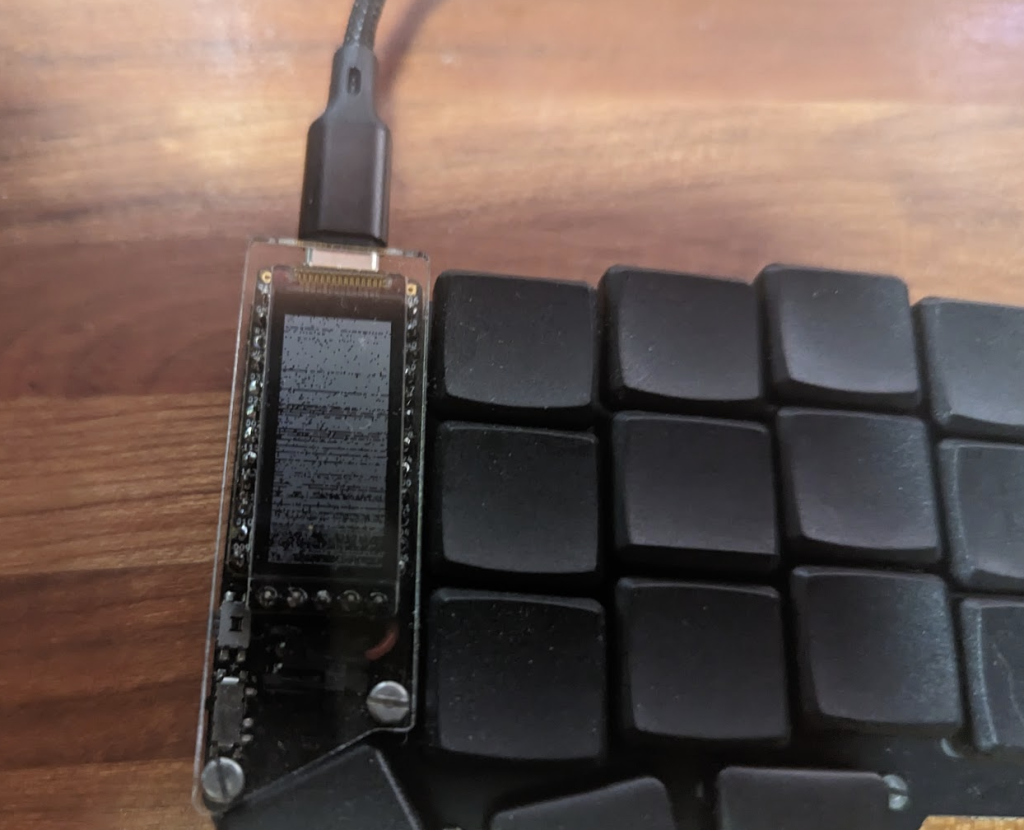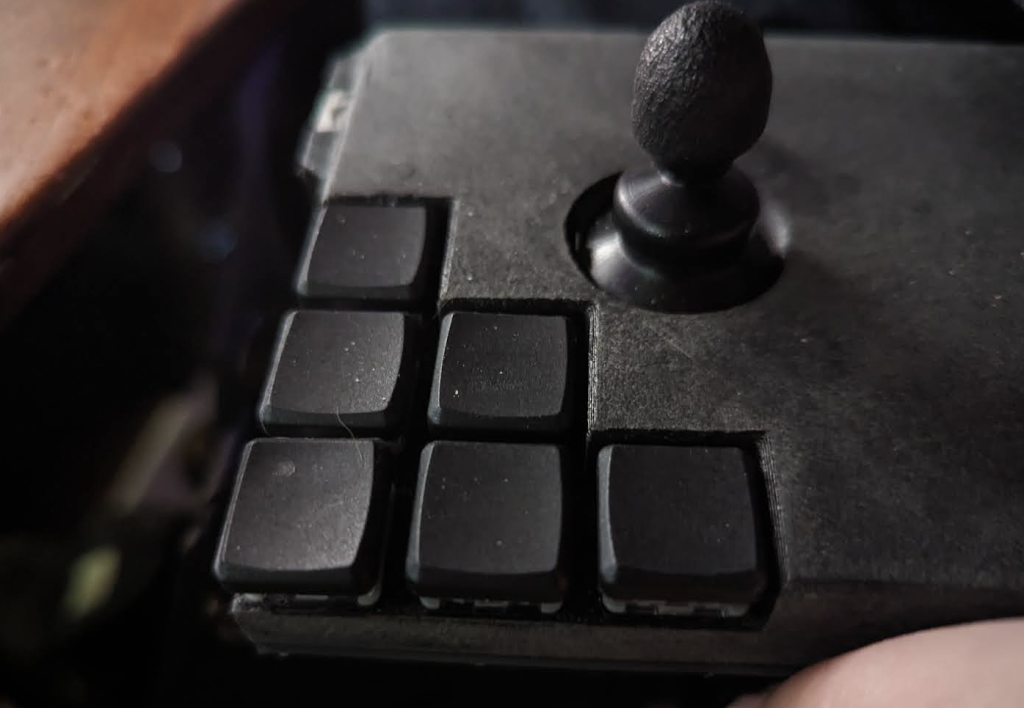Previous joystick blog posts:
Part 1 – project introduction
Part 1.5 – More design detail
Part 2 – Test print…and Legos?
Part 3 – Revision and buttons
It’s that time again! The time for a super awesome, sleek, and functional update to the joystick platform project.
Butwhere were we? Well, last time there were talks of joysticks instead of buttons, measuring things like distance and magnetism of my finger..; just a bunch of stuff that I think overcomplicated the project so we dialed back a little bit to what’s important and this is what we’ve got!

Andy and myself moved away from the joystick idea because there happened to be quite a bit of programming and complications when developing aspects of controlling the hall effect sensor. It generally took a fair amount of time to implement that when it seems like buttons were the right way to go. I had purchased a custom wireless keyboard and realized that the key switches were incredibly easy to press.

So we harvested those and created a nice little pattern for how to inlay the buttons so that they wouldn’t take up more space than the platform had vertically. On top of that all the keys are programmable through software created in Arduino IDE so all the buttons can essentially be any key on a keyboard.

There is basically only one negative of this iteration and you can’t really see it so I’m going to describe it to you. The USB cable jettison’s off the front of the controller platform. So why is that a negative? Well because if it’s plugged in and you’re trying to get snugged up to a desk, just trying to get aligned comfortably, there’s a really good chance you’re going to break off that USB plug and possibly dislodge the jack itself. Is that stopping me from using it? Absolutely not. Even if I’m just using one of the buttons, the addition of that button to my work speeds me up quite a bit.

The answer is yes. Yes you do. In fact you think that’s one of the coolest aspects of this iteration of the project!

But how does it function? It actually functions pretty well. I mentioned earlier that we got specific key switches. Those key switches are incredibly easy to press and in fact they are the ‘Kailh Low Profile Choc Pink Switches‘ which only use 20g of operating force meaning that they’re the easiest switches to operate. Pretty sure if they needed even less force the buttons would push themselves on accident. Additionally the key caps are low profile as well so the travel is quite minimalistic.
If you’re interested in more on this project like the links to the GitHub project, the actual hardware and wiring behind it all, as well as some of the details of how it all came together please check out my good friend Andy Letourneau’s Patreon or email him directly at odd@off-peak.engineer to see what he can do to help!
Take care and have an awesome 2024!
-mh

